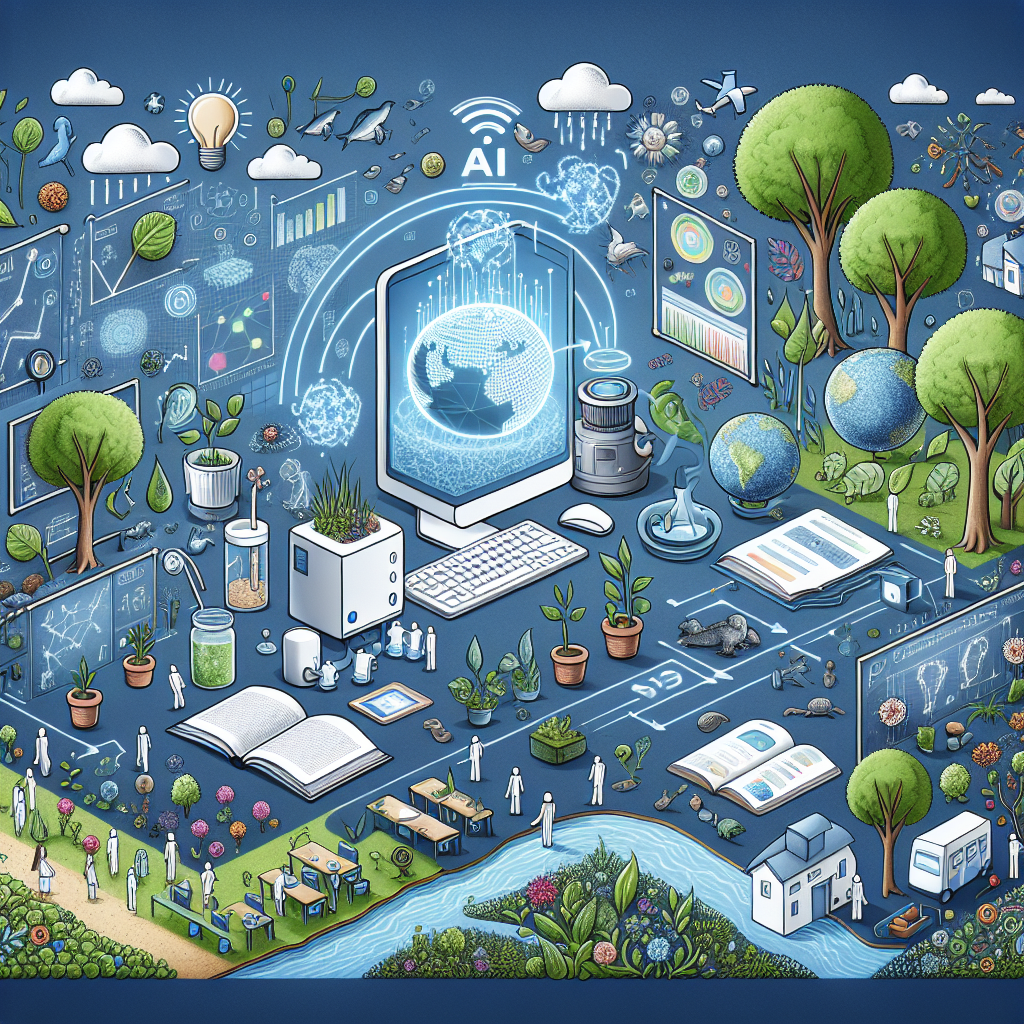In recent years, artificial intelligence (AI) has emerged as a powerful tool in various fields, including environmental science education. By leveraging AI technologies, educators can promote sustainability and conservation efforts by providing students with innovative learning experiences and real-world applications. In this article, we will explore the role of AI in environmental science education, its benefits, challenges, and future implications.
Role of AI in Environmental Science Education
AI has the potential to revolutionize the way environmental science is taught and researched. By utilizing machine learning algorithms, educators can create personalized learning experiences for students, tailor-made to their individual needs and interests. AI can also analyze vast amounts of data collected from various sources, such as satellites, sensors, and drones, to provide insights into environmental issues and trends.
One of the key applications of AI in environmental science education is in the field of environmental monitoring and conservation. For example, AI-powered drones can be used to survey wildlife populations, monitor deforestation, and track changes in the environment. By analyzing the data collected by these drones, students can gain a better understanding of the impact of human activities on the environment and learn how to develop sustainable solutions.
Another important application of AI in environmental science education is in the field of climate change research. By using AI algorithms to analyze climate data, students can explore the causes and effects of climate change, predict future trends, and develop strategies to mitigate its impact. AI can also be used to create interactive simulations and visualizations that help students visualize complex environmental processes and understand the interconnectedness of ecosystems.
Benefits of AI in Environmental Science Education
There are several benefits of incorporating AI into environmental science education. One of the main advantages is the ability to provide personalized learning experiences for students. By using AI algorithms to analyze student data and track their progress, educators can tailor their teaching methods to meet the needs of each individual student, ensuring a more engaging and effective learning experience.
AI can also help students develop critical thinking and problem-solving skills by challenging them to analyze complex environmental data and come up with creative solutions to real-world problems. By working on AI-driven projects and simulations, students can gain practical experience in applying their knowledge to address environmental challenges, preparing them for future careers in sustainability and conservation.
Furthermore, AI can enhance the efficiency and effectiveness of environmental science education by automating repetitive tasks, such as data analysis and grading. This allows educators to focus on more meaningful activities, such as mentoring students, conducting research, and developing innovative teaching methods. By leveraging AI technologies, educators can create a more dynamic and engaging learning environment that fosters collaboration, creativity, and critical thinking.
Challenges of AI in Environmental Science Education
Despite its potential benefits, AI also poses several challenges in the field of environmental science education. One of the main concerns is the lack of access to AI technologies and training for educators and students. Many schools and universities may not have the resources or expertise to implement AI-driven programs, limiting the potential impact of these technologies on environmental science education.
Another challenge is the ethical implications of using AI in environmental science education. As AI algorithms become more sophisticated, there is a risk of bias, discrimination, and privacy violations in the collection and analysis of environmental data. Educators must be mindful of these ethical considerations and take steps to ensure that AI is used responsibly and ethically in the classroom.
Furthermore, there is a concern that AI may replace human educators in the future, leading to job displacement and a loss of human connection in the learning process. While AI can enhance the efficiency and effectiveness of teaching, it is essential to strike a balance between technology and human interaction to ensure a holistic and enriching educational experience for students.
Future Implications of AI in Environmental Science Education
As AI technologies continue to advance, the future implications for environmental science education are promising. AI has the potential to revolutionize the way students learn about the environment, providing them with interactive and immersive experiences that engage their curiosity and foster a deeper understanding of environmental issues.
In the coming years, we can expect to see more AI-driven tools and platforms that enable students to explore complex environmental concepts, collaborate on projects, and engage with real-world data in innovative ways. By harnessing the power of AI, educators can inspire the next generation of environmental scientists, conservationists, and sustainability leaders to address the pressing challenges facing our planet.
FAQs
Q: How can AI be used to promote sustainability and conservation in environmental science education?
A: AI can be used to analyze environmental data, monitor wildlife populations, track deforestation, and predict climate change trends, providing students with valuable insights and tools to develop sustainable solutions.
Q: What are the benefits of incorporating AI into environmental science education?
A: The benefits of AI in environmental science education include personalized learning experiences, enhanced critical thinking skills, increased efficiency, and effectiveness, and the development of practical skills for future careers in sustainability and conservation.
Q: What are the challenges of using AI in environmental science education?
A: Challenges of using AI in environmental science education include limited access to AI technologies and training, ethical implications, such as bias and discrimination, and concerns about job displacement and human connection in the learning process.
Q: What are the future implications of AI in environmental science education?
A: In the future, AI technologies will continue to revolutionize environmental science education by providing students with interactive and immersive learning experiences, enabling them to explore complex environmental concepts, collaborate on projects, and engage with real-world data in innovative ways.

